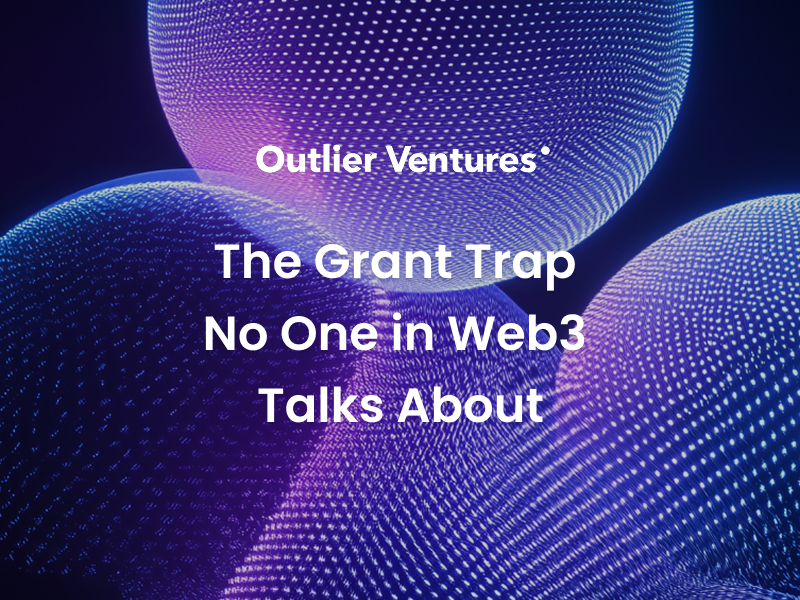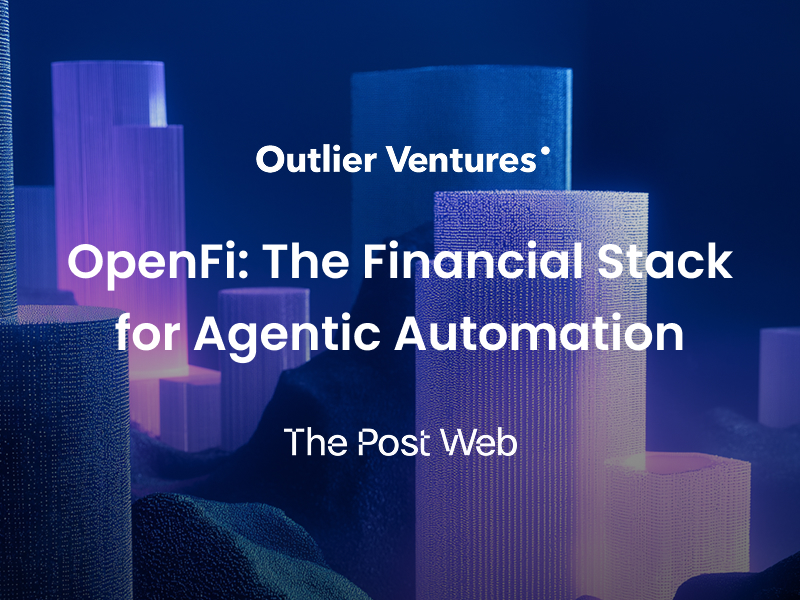The NFT industry has rapidly matured due to a confluence of adverse macro conditions and a lack of catalysts for innovation. Over the past two years, the focus of the industry has been on highly speculative avatar IP driven projects, which were highly founder-centric and effective in generating community engagement and large sums of revenue from an initial mint. However, these dynamics are now diminishing as the market becomes saturated and macro conditions continue to suppress value extraction from mint dynamics. Regardless of the current sentiment, we are seeing the proliferation of infrastructures and use cases that empower Web3-IP for both creators and brands, such as Jack Butcher’s use of NFT metadata and CC0 principles, manifold.xyz’s tooling to empower creators, Nike’s .Swoosh platform to bring NFTs to fans, and the somewhat controversial but necessary financialization of NFTs.
The question that arises now is: what’s the next step? At Outlier Ventures, we see the industry expanding and becoming more intricate, with a particular focus on the advancement of multilayered IP ecosystems. This trend, driven by market segmentation, the expansion of successful Web3 native projects, and the entry of established Web2 companies, will alter the economics of future drop structures with a particular strain on supply/demand principles. In more Web3 native drop structures, NFTs were distributed on a fixed supply (generally around 10k) at a fixed mint price with very strict parameters and use cases for additional supply (usually in the form of a secondary collection). On the other hand, multistructured IP platforms have opted for more flexible supply/demand structures.
Experimental Activations
Various projects have set the foundation for Web3-native consumer IP and multilayered platforms by implementing phased, experiential activations. Dookey Dash made headlines with one of the largest esports prizes ever, Pudgy Penguins expanded into the toy market, DeGods expanded their ecosystem with y00ts, and Doodles 2 released expansion packs and the stoodio app. If we look at each and every top tier Web3 native NFT projects they’ve made concerted efforts to increase and diversify the scope of their IP.
So what does a multifaceted IP platform look like? Well, we hate to bring up what is skeletons in the closet for 90% of the NFT crowd but NBA Top Shot’s core product elements provide a good example of these highlight features:
- Clean UX/UI (for the most part)
- Community focus
- Reframing of NFTs
- Fun Mint Mechanics
- Fair Price Points
- Active Challenges
- Sets and collector incentives
- Rarity Structure
- + EV (for a while)
Beyond Speculation
In hindsight it is easy to reflect on the tangible elements that led to the success of the Top Shot platform, but it is important to not forget the numerous unsuccessful attempts made by well-funded companies to achieve product-market fit, which illustrates the challenging task of creating a brand and developing a value beyond speculation. In the case of IP and NFTs, their ephemeral nature makes it challenging to translate their value and utility into something tangible, requiring careful work. There are several factors at play in this process:
Web3 native IP comprises not only a product but also a community, particularly in strong IP plays that rely on cultural consumption. In such cases, the brand and the community are interconnected, requiring the brand to consider a vast and powerful group of stakeholders, a concept that is relatively new. Additionally, financial incentives often become the primary focus, diverting teams’ attention from product development and resulting in high expectations from holders, and, although founders have grand visions, execution often reveals a lack of well-defined long-term goals for product and brand establishment, as well as corporate structure. Furthermore, technological limitations or a lack of infrastructure for interactive IP often lead to projects operating in silos.
Web2 Giants Embracing Web3 Opportunities
Despite the challenges posed, Web2 giants like Adidas, Reddit, Nike and Starbucks are actively embracing Web3 opportunities. Leveraging their extensive experience, resources, and brand equity, they are striving to carve out a piece of the Web3 landscape. Instead of conforming to the stagnant industry norm of single IP drops, these brands have chosen to build immersive and multifaceted ecosystems. These brands demonstrate a deep understanding of how programmatic assets, particularly NFTs, can redefine and reinforce their IP and bond with consumers through gamification, immersion, and automation. More specifically, they seem to acknowledge the importance of community, ownership, and co-creation principles that must be utilized to attract today’s digital consumers. By identifying a “Blue Ocean” for their legacy IP and adopting the Web 2.5 concept with a sleek frontend and seamless blockchain obfuscation, they achieved market penetration and gained first-mover advantages by creating platforms to source, develop and distribute IP in a multitude of ways.
Synergy or Competition?
So, what’s next? Will Web3 native IP ecosystems compete with the large incumbents, or will their relationship be synergistic, leading to a healthy market diversification? Currently, it appears that web 2 and Web3 native IP plays are moving in different directions, with Web3 native IP leading to category defining projects and innovations that establish industry standards in handling IP such as Sappy Seal’s Meme Machine, Nouns Prop House public infrastructure, or decentralized storytelling on shibuya.xyz. Web3 native projects, in general, have insulated themselves with a robust community and a clear vision, which has empowered them to transcend the conventional structure of a singular, large collection of assets often associated with a charismatic figure resembling a young growth-hacker. While avatars and PFPs remain a prominent aspect, the landscape is progressing beyond the notion that IP development must commence by releasing a solitary PFP or avatar collection to captivate individuals with the concept of a digital identity.
We are seeing this move away from single structure IP play out increasingly with projects professionalizing and expanding their IP into specific verticals, from gaming ecosystems like Treasure DAO with their ever expanding game catalog, to collectives such as Moonbirds stretching the boundaries with their new Mythics IP, or DAOs for cultural production like FWB collaborating with world leading brands. The same principles can be seen with web2 incumbents like Nike, who exemplify a multilayered platform approach with .Swoosh. An excellent illustration of this is their OF-1 activation, where they leveraged their renowned AirForce One Sneaker IP and engaged users in a co-creative process using Web3 technology.
Tighter Feedback Loops, Faster Iteration
Adopting this approach allows brands and projects to streamline their IP development process, gathering early feedback and concentrating on the specific verticals that hold significance for their customers. With tighter feedback loops, product iteration becomes faster and more productive, resulting in improved storytelling, community incentivization, expedited shipping, and a stronger sense of psychological ownership among the holder base. Consequently, this shapes community sentiment in a positive manner.
We expect these benefits to be further enhanced by on-chain creative composability and a comprehensive infrastructure system centered around NFTs, which will allow participants (and creators) to facilitate direct and peer-to-peer processes for creation, surfacing, distribution, curation, and discovery on the back of infrastructure like Zora or or Metalabel.
As projects, both traditional and native, transition to multifaceted IP layers, we can’t help but feel a sense of anticipation for the future and recognize the pivotal role that each of these distinct cultural distribution platforms plays in our ecosystem. While their approaches may vary, their ultimate goals align in elevating the convergence of culture, finance, and technology to new heights and establishing innovative ways of creating, consuming, and distributing culture. Web2 projects strive to fortify existing IP through reformative methods, while Web3 native projects adopt an inherently experimental mindset, with each unique approach contributing significantly to the most significant cultural distribution platforms of our generation.




